Ever notice your dog staring out the corner of their eye like they're low-key judging you? That wide-eyed glare with the whites of their eyes showing? That's the infamous whale eye. And if your dog's whale eyes could talk, it'd probably say, "I'm not feeling this situation."
This look is a signal, a bold, bug-eyed warning that your pup might be feeling on edge or seconds from snapping. The more you understand it, the better friend you'll be to your canine companion.
What Is Whale Eye in Dogs?

Whale eye happens when a dog shows the white portion of their eye, usually while keeping their head pointed in a different direction. It looks like a side-eye with the half-moon shape front and center. It's a good indicator that something's bothering them.
Why the name "whale eye"? It comes from the same look whales give when they roll their eyes, exposing the whites. Dogs do it, too, just with a little more sass and a lot more meaning.
When your pet shows whale eye, they're communicating. If you're not paying attention, you might miss what their body language is trying to say.
What Does a Dog Whale Eye Signal?
A dog whale eye is one of those subtle signs that show your dog feels uneasy, annoyed, or uncomfortable. If you notice a whale-eye look, pay attention because something in your dog's surroundings is probably throwing them off.
Maybe someone's in their space. Another dog may have shown up, and things got heated. It could be a kid tugging at their ears or a person reaching for a belly rub they didn't ask for. The white part of the eye says it all: "I'm watching this, and I don't love it."
This look, though photo-worthy at times, isn't random. It's a moment that tells you your dog feels anxious or unsure. If ignored, that tension can boil over.
Common Emotional Triggers Behind the Look
Whale eyes usually pop up when a dog feels trapped or unsure. You might see that sharp side glance when your dog hears a loud noise or when someone reaches for them too fast. Even getting their nails trimmed can set it off.
Some dogs tend to flash it when they feel restrained, whether on a leash, in a crate, or surrounded by too many other animals. That white-eye warning often comes right before bigger reactions.
Whale eye is a top-tier red flag. It's one of the easiest ways to spot what's going on inside your dog's head without a single bark.
Warning Sign or Normal Expression? Context Is Key
Not every flash of a whale eye equals a meltdown. Sometimes, it does mean trouble. Other times, your dog's just side-glancing a sneaky cat. That's why context is everything when reading this look.
If your dog sees something odd, hears a weird sound, or spots other canines too close for comfort, that whale eye could be a sign of growing tension. But if they're resting and then glance sideways without the stiff body, it might just be a quick check on their surroundings.
Watch the rest of their body language. Other signals include pinned ears, a low tail, and a tense mouth.
When To Worry About Whale Eye Behavior

If your dog shows a whale-eye look often and it's accompanied by tense vibes or weird behavior shifts, it's time to take things seriously. A one-off side glance is not a big deal. Constant side-eye with attitude, though, is a whole 'nother story.
A dog who keeps flashing true whale eye around kids or other dogs or during certain situations could be reacting to something deeper. Phobia, discomfort, and past stressful experiences can all play a role. Looking the other way can push your pet to act out.
The key is to notice the pattern. Is it happening more? Is it always around specific triggers? What other reasons can you think of?
Fear, Anxiety, and Aggression Indicators
Fearful dogs often freeze up, avoid eye contact, and tuck their tails, and that eye flash can be the first warning shot. If your dog feels anxious, you might see them lick their lips, yawn too much, or turn their head away. If those signs go ignored, all that nervous energy can flip fast.
In some cases, aggressive behavior doesn't come out of nowhere. It builds. That half-moon look is a stop sign before a bite.
So, if your sidekick's throwing shade with their eyes, don't brush it off. Respect the signal.
Signs It's Time To Step In or Seek Help
If the whale eye makes a regular appearance along with other warning signs, it might be time to call in backup or adjust the situation. Keep an eye out for:
-
Freezing in Place. Your dog stops moving like a statue. That's tension bubbling under the surface.
-
Lip Licking or Yawning. Repeated licking or yawning often means your dog feels anxious or trapped.
-
Ears Pulled Back. Flattened ears can clearly indicate fear or agitation, especially when paired with the eye.
-
Growling or Snapping. It's a sign your dog's stress is reaching its peak.
-
Avoiding Eye Contact. That's usually avoidance from feeling uneasy.
Dog Body Language That Often Appears With Whale Eye
That dramatic side glance is usually part of a whole-body message. And if you don't catch the other signs, you might miss what your dog's trying to say loud and clear. Here are some common canine body language cues:
-
Tense Posture. That's a solid clue that they're not relaxed.
-
Ears Back. These signal discomfort, especially if paired with that half-moon glare.
-
Lip Licking. Not hunger but anxious behaviors kicking in.
-
Tail Tucked or Still. A low or frozen tail can show fear.
-
Avoiding Touch or Turning Away. They shift their head or step back when approached.
-
Wide Eyes With Tense Face. You're looking at a seriously nervous dog.
How to Spot Escalating Stress or Discomfort
Catching the whale eye early before it becomes a bigger problem is the real trick. Dogs rarely go from chill to snapping without sending signals first. You just have to know what to look for.
Start with the small stuff. Repeated lip licking, avoiding touch, and freezing up for a second too long could indicate the early stage of a dog's anxiety creeping in. Throw in a half-moon eye, and your pup's basically whispering, "Help me out here."
Then come the bigger signs: growling, stiff body language, and baring teeth. If you've missed the early whispers, the later signs yell. Once your dog feels threatened, things can escalate fast, so always check the vibe before it goes sideways.
How To Calm a Dog Showing Whale Eye

When your dog gives you the side-eye of doom, it's time to help them feel safe. A whale-eyed pooch is feeling overwhelmed, and they need a calculated, confident response.
Start by backing off a little. Give them space to breathe and take a break from whatever's making them twitchy. Avoid yelling and sudden movements. Aim for quiet vibes and a watchful eye. You want to help your pet relax without adding more pressure.
Also, keep things chill around them. Loud voices, rough play, and too many other dogs might crank up their unease. A peaceful environment produces a chill dog. Now, let's talk about more about how to make that happen.
Giving Space and Reducing Pressure
If your dog shows the whale eye, the first thing you need to do is to back it up. Give them space both physically and emotionally. A crowded room, a grabby child, or a hovering person can make things worse real quick.
Step one: Remove the pressure. Don't force eye contact, and don't reach for them. Just pause. Let your dog move at their own pace and check out their surroundings without feeling trapped.
Sometimes, walking away is the best gift you can give a nervous dog. It tells them you're not a threat. That quiet moment of relief can do more than a hundred snacks.
Using Positive Reinforcement and Calming Techniques
Once your dog feels safe, it's time to turn on the charm. Don't jump in with loud praise. Instead, keep it low-key and rewarding. Use a treat or a favorite toy to shift their focus from whatever made them tense.
If your dog exhibits whale eye, catch it early and offer a positive outlet. Ask for a simple command they know—like sit or paw—and reward it. It helps them feel in control and redirects their anxious thoughts into something familiar.
You can also bring in soothing techniques, such as soft tones, slow movements, and a relaxing spot in the house. Give them a comfy bed and soft lighting to help them chill in peace, not panic.
Natural Support for Anxious Dogs
If your dog flashes whale eyes too often or seems overly nervous or frightened when they shouldn't, it might help to bring in some natural support. Think of it as a little extra care for those worried moments.
That's where CBD (cannabidiol) products come in handy. HolistaPet's CBD dog treats, soft chews, and oils are perfect for helping our canine companions relax and feel at ease without knocking them out. They're a natural addition to your pet's wellness routine, made to help soothe tension and support emotional balance.
These products won't "fix" behaviors overnight, but they can help take the edge off. Combined with love, patience, hope, and good training, they give your best friend a better shot at feeling safe even when the world feels a bit too loud or scary.
Can Certain Breeds Show Whale Eye More Than Others?
Yes, some dog breeds are more likely to flash that dramatic side-eye. It's a mix of their DNA and how they react to stuff. Breeds that are super alert or naturally cautious tend to throw the whale-eye look more often when things get weird.
Herding breeds, like Border Collies and Australian Shepherds, are quick to react and don't love surprise chaos. Guarding breeds might give you that wide-eyed stare if they sense anything shady. Also, small, sensitive dogs who are afraid of many things can go full half-moon when they feel bothered.
Don't blame it all on the breed, though. Environment, training, and past experiences matter just as much. Every dog shows their feelings differently, even if they share the same breed name.
Breed Temperament vs. Individual Behavior
Just because two dogs are the same breed doesn't mean they'll act the same. One dog might be chill at the vet, while the other throws out the whale eye the second a stranger blinks. Breed gives you clues, but it's not the whole story.
Temperament plays a big role. Some breeds lean cautious, while others are naturally bold. But even the calmest breed can have a dog that's nervous or quick to react. As for bold breeds, they can surprise you with how mellow they are if they've had solid socialization and training.
So, if your dog is giving you that half-moon eye, don't rush to blame the breed. Look at the full picture, from past experiences to daily routines to how they react to their surroundings. Every dog is their own little mystery.
How To Prevent Whale Eye in Stressful Situations
Preventing whale eye starts with prepping your dog before the stress hits. A little planning goes a long way when it comes to canine behavior. Remember the following:
- Training, Routine, and Safe Zones. Dogs thrive on structure. Daily routines from eating to sleeping and simple commands like "sit" and "stay" give them confidence. Create a go-to safe space—a cozy bed, a crate, or a quiet nook—where your dog can retreat and decompress.
- Reducing Triggers at Home or in Public. Loud noises, fast movements, and too much attention can overwhelm some canines. Limit exposure to known triggers when possible, and give your pet room to breathe in busy places. A calm dog is a confident one.
When To Talk to a Vet or Behaviorist

If your dog's anxiety is starting to take over their day-to-day life, see your vet immediately. A whale-eyed pooch that constantly looks uneasy, avoids people, or shows changes in behavior isn't just being dramatic.
Chronic stress, sudden aggression, and full-on fear responses need more than just treats and space. A vet can rule out any physical reasons your pet might be feeling off. Sometimes, feeling sick can make a dog act extra tense or withdrawn.
A certified behaviorist can also help you decode the signals, build trust, and shift the behavior for good. If things keep escalating or feel out of your control, don't wait. Get help, and your dog will thank you for it.
Final Thoughts: Whale Eyes Dog
A whale-eyed dog is dropping a major clue, and the more you recognize it, the better you can respond. It's not attitude but a signal wrapped in eyeballs and tension.
Learning to spot the half-moon eye, along with all the other sneaky body language signs, helps you be the best possible buddy for your pup. You can step back, offer comfort, and call in the pros if necessary.
For a little extra support, our CBD Dog Treats for Anxiety, CBD Calming Chews, and other CBD options offer a gentle, natural way to help your best buddy relax. Let's keep those eyes soft, not stressed.
See more on dog care here!



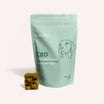


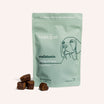
![Probiotics For Dogs [Soft Chews] - HolistaPet](http://www.holistapet.com/cdn/shop/files/Probiotic-Infographic-1_472d7a29-e30c-435a-9638-1365d8c3a9f9.jpg?v=1725384841&width=104)
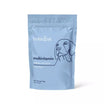




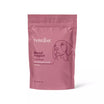
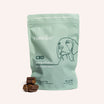

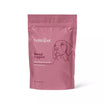
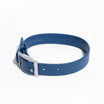

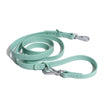
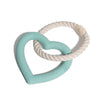
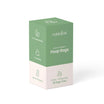
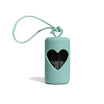
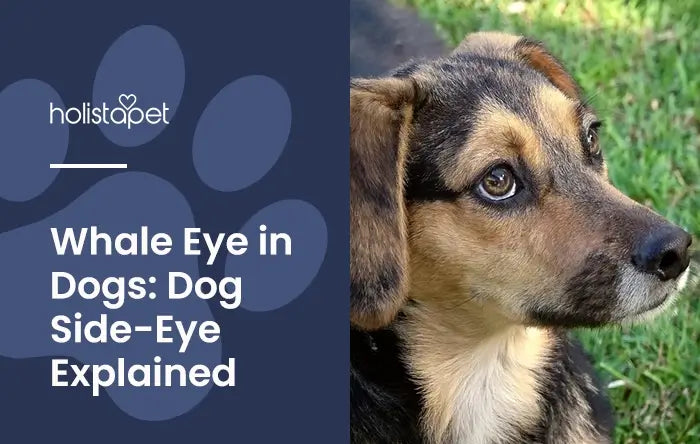
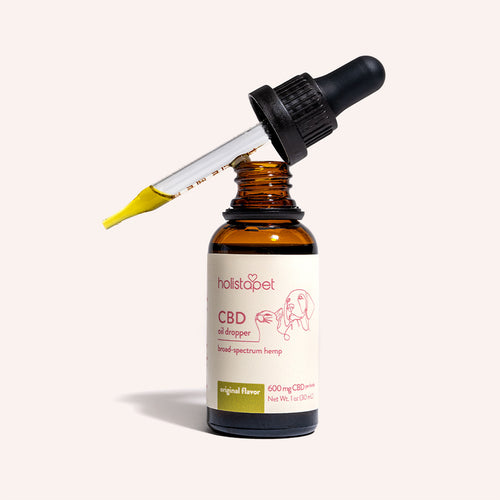 Broad Spectrum CBD Oil for Dogs - Fast Acting
Broad Spectrum CBD Oil for Dogs - Fast Acting
 Chicken Flavored CBD Oil For Dogs - Easy Dose
Chicken Flavored CBD Oil For Dogs - Easy Dose
 Salmon Flavored CBD Oil For Dogs - Highly Rated
Salmon Flavored CBD Oil For Dogs - Highly Rated
 CBD Dog Treats for Anxiety - Loved by Thousands
CBD Dog Treats for Anxiety - Loved by Thousands





Leave a comment
All comments are moderated before being published.
This site is protected by hCaptcha and the hCaptcha Privacy Policy and Terms of Service apply.